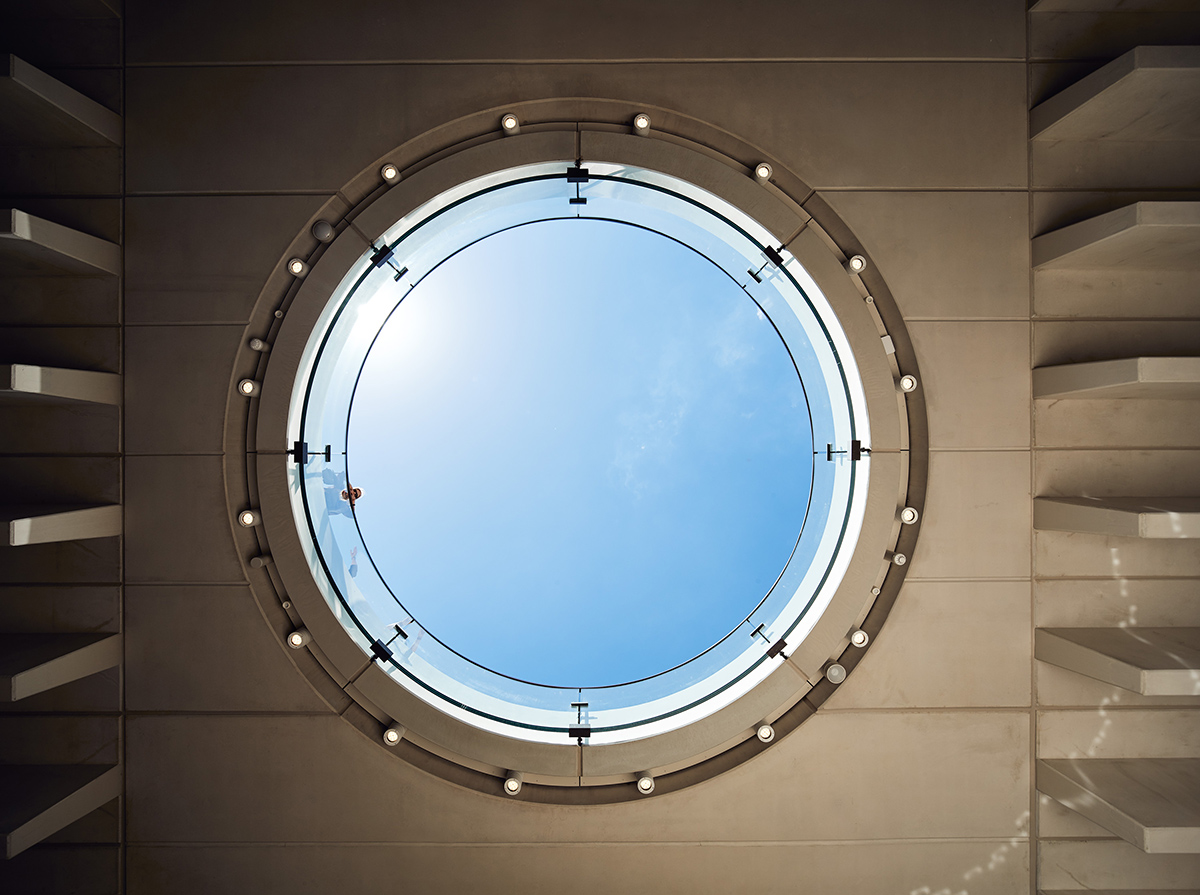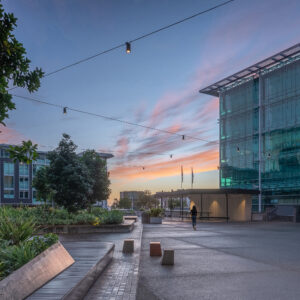
FEATURE LIGHTING, DOWNLIGHTS, PROJECTORS
Illuminating a sentimental space, honouring service and sacrifice
Sydney, NSW
- Completed2018
- ClientCity of Sydney and NSW Public Works Government Architects Office
- Lighting Design (exterior)POV
- Lighting Design (interior)Arup
- FacadeAECOM, Inhabit Group, Surface Design Pty Ltd
- PhotographyPeter Bennet & Ralph Alphonso
Created to commemorate the Great War (1914 – 1918), the Anzac Memorial, originally established in 1934 designed by Bruce Dellit, serves to provide sentimental space for reflection in Sydney’s Hyde Park. To mark the centenary of World War 1, the City of Sydney and NSW Public Works Government Architects Office wanted to respect Dellit’s original vision, while capturing a new generation with contemporary extensions to the cherished Sydney landmark – thoughtfully interlinking old and new.
Between the exterior and interior underground areas, lighting design multiple lighting design teams required several important considerations:
• Encouraging an inviting, warm space for reflection
• Discreteness of luminaires; integrating in an invisible way to the architecture
• Ecological importance of the surrounding parklands, adopting warmer colour temperatures with less blue content and minimising light pollution
• Quality optics with the ability to tightly control and direct light whilst preventing glare
• Longevity and robustness of luminaires given exposure to various environmental elements
• Minimal need for maintenance, backed by confidence in a strong supplier warranty
• Safety for people passing through the space at different times of the day and night
Exterior Facade
When it came to the lighting design for the exterior façade, the major challenge rested in needing to discretely integrate luminaires in an ‘invisible’ way, while cleverly evoking the reverence of the memorial with gentle illumination. Working with the fixed positions of existing pole structures and with a short six-week lead time added additional pressure the project lighting design team for PointOfView (POV).
The monument includes four granite sculptures in each corner, representing ‘The Four Seasons’ and 16 seated figures that signify the ‘The Arts of Peace and War’. The design team from POV gave the utmost respect to the architectural elements of the structure without shying away from making a striking statement. “It needed to be a contemplative space, with a very strong and bold presence,” the POV design team stated. “The lighting effects are bold, enhancing the facets of the architecture without too much intricacy, yet enough to reveal the details.”
This is primarily achieved by LED narrow beam projectors mounted on poles and focused on each of the statues, bringing them to life. A hierarchy is created using higher wattage projectors to highlight the four corner statues, and lower wattage for the seated figures. These are combined with precisely aimed uplights, defining the inner face of the columns. The crown is defined with warm amber LEDs integrated into the Ziggurat-styled stepped roof. Linear LED integrated uplighting is also used to anchor the corners of the building, with high-output LEDs concealed within aluminium angles. The lighting is controlled by the use of a time-clock. “The light sources were mounted on poles beyond the boundary of the site. With the long anti-glare snoots and the tight, narrow beam control we were able to keep the fittings at a distance where they weren’t interfering with the building,” POV’s designers explained.
The adoption of LED technology from WE-EF assured an installation of longevity and minimal maintenance while enabling very tight beam control using lensed optic technology, resulting in limited spill light beyond of the peak beam angle. Residing in one of the biggest parks in the centre of Sydney’s CBD’s, tight optical control, minimising light spill and the use of warmer colour temperatures with less blue light content, is of significant importance to the ecological sensitivities of the area, especially for flora and fauna.
Here, the new solution delivered a vast improvement on the previous lighting scheme which saw the monument floodlight from all sides. The WE-EF luminaires specified for the project, included FLC131 and FLC141 projectors (24 W and 36 W, respectively), with remote gear and spigot mounting. Each luminaire was required to pan and tilt – a principle reason for using the Type 1 mounting – to enable a fine-tuning capability once the products had been installed. “The lumen output, together with the narrow beam angles and a colour temperature that is complementary to the stone, made WE-EF right for the job,” the POV design team said.
The project has received an award commendation from Illuminating Engineering Society of Australia and New Zealand Lighting Society (IES), the with modern high-performing technology from WE-EF LIGHTING, which included a range of lens and wattage configurations. IES judges said: “Even with the fast-tracked redesign, this is a testament to how a worthy project can still be delivered by a collaborative team. This Sydney landmark can now be further appreciated by the implementation of a well-designed lighting scheme.”
Interior
The interior lighting design by Arup draws focus to the oculus gallery and existing Hall of Memory. The striking open oculus connects the existing memorial to the outdoor environment and park setting. Exposing the hall to the elements – sunshine, fresh air, rain, fluctuations in humidity and temperature, demanded that luminaire selection withstand the external conditions. At night the oculus lights are left on low so that people passing by can still feel part of the experience.
With a strong reputation for robust products and an anti-corrosion coating system (5CE + Primer), WE-EF DAC220 12 LED, in 24 W Traffic White downlights were chosen in a warm 3000 K colour temperature, to beautifully encapsulate the circular shape. The quality backed by comprehensive 10 Year warranty and local service support that WE-EF provides on all its luminaires was also key to the lighting selection, as all stakeholders involved in the project knew the installation would be reliable and require little to no maintenance for many years to come.
The result
The involved lighting design teams were able to deliver a stunning project, with warmer colour temperatures adopted from exterior to interior, to beautifully complement the stone and brass materials, while the luminaires are consistently and cleverly concealed within architectural forms, ensuring that the spaces create a seamless ambience befitting of commemoration and reflection for generations to come.






